Author Archives: Celso Martinho
Author Archives: Celso Martinho
Cloudflare’s AI Audit dashboard allows you to easily understand how AI companies and services access your content. AI Audit gives a summary of request counts broken out by bot, detailed path summaries for more granular insights, and the ability to filter by categories like AI Search or AI Crawler.
Today, we're going one step further. You can now quickly see which AI services are honoring your robots.txt policies, which aren’t, and then programmatically enforce these policies.
Robots.txt is a plain text file hosted on your domain that implements the Robots Exclusion Protocol, a standard that has been around since 1994. This file tells crawlers like Google, Bing, and many others which parts of your site, if any, they are allowed to access.
There are many reasons why site owners would want to define which portions of their websites crawlers are allowed to access: they might not want certain content available on search engines or social networks, they might trust one platform more than another, or they might simply want to reduce automated traffic to their servers.
With the advent of generative AI, AI services have started crawling the Internet to Continue reading

It's been two years since we announced Email Routing, our solution to create custom email addresses for your domains and route incoming emails to your preferred mailbox. Since then, the team has worked hard to evolve the product and add more powerful features to meet our users' expectations. Examples include Route to Workers, which allows you to process your Emails programmatically using Workers scripts, Public APIs, Audit Logs, or DMARC Management.
We also made significant progress in supporting more email security extensions and protocols, protecting our customers from unwanted traffic, and keeping our IP space reputation for email egress impeccable to maximize our deliverability rates to whatever inbox upstream provider you chose.
Since leaving beta, Email Routing has grown into one of our most popular products; it’s used by more than one million different customer zones globally, and we forward around 20 million messages daily to every major email platform out there. Our product is mature, robust enough for general usage, and suitable for any production environment. And it keeps evolving: today, we announce three new features that will help make Email Routing more secure, flexible, and powerful than ever.
The SMTP email protocol Continue reading


The Workers Browser Rendering API allows developers to programmatically control and interact with a headless browser instance and create automation flows for their applications and products.
Since the private beta announcement, based on the feedback we've been receiving and our own roadmap, the team has been working on the developer experience and improving the platform architecture for the best possible performance and reliability. Today we enter the open beta and will start onboarding the customers on the wait list.
Starting today, Wrangler, our command-line tool for configuring, building, and deploying applications with Cloudflare developer products, has support for the Browser Rendering API bindings.
You can install Wrangler Beta using npm:
npm install wrangler --save-dev
Bindings allow your Workers to interact with resources on the Cloudflare developer platform. In this case, they will provide your Worker script with an authenticated endpoint to interact with a dedicated Chromium browser instance.
This is all you need in your wrangler.toml once this service is enabled for your account:
browser = { binding = "MYBROWSER", type = "browser" }
Now you can deploy any Worker script that requires Browser Rendering capabilities. You can spawn Chromium instances and interact with Continue reading

This post is also available in 简体中文, 日本語, Deutsch and Español.

The Cloudflare Workers' ecosystem now features products and features ranging from compute, hosting, storage, databases, streaming, networking, security, and much more. Over time, we've been trying to inspire others to switch from traditional software architectures, proving and documenting how it's possible to build complex applications that scale globally on top of our stack.
Today, we're excited to welcome Constellation to the Cloudflare stack, enabling developers to run pre-trained machine learning models and inference tasks on Cloudflare's network.
Machine learning and AI have been hot topics lately, but the reality is that we have been using these technologies in our daily lives for years now, even if we do not realize it. Our mobile phones, computers, cars, and home assistants, to name a few examples, all have AI. It's everywhere.
But it isn't a commodity to developers yet, though. They often need to understand the mathematics behind it, the software and tools are dispersed and complex, and the hardware or cloud services to run the frameworks and data are expensive.
Today we're introducing another feature to our stack, allowing everyone to Continue reading


The Fediverse has been a hot topic of discussion lately, with thousands, if not millions, of new users creating accounts on platforms like Mastodon to either move entirely to "the other side" or experiment and learn about this new social network.
Today we're introducing Wildebeest, an open-source, easy-to-deploy ActivityPub and Mastodon-compatible server built entirely on top of Cloudflare's Supercloud. If you want to run your own spot in the Fediverse you can now do it entirely on Cloudflare.
Today you're left with two options if you want to join the Mastodon federated network: either you join one of the existing servers (servers are also called communities, and each one has its own infrastructure and rules), or you can run your self-hosted server.
There are a few reasons why you'd want to run your own server:


Radar 2.0 was built on the learnings of Radar 1.0 and was launched last month during Cloudflare's Birthday Week as a complete product revamp. We wanted to make it easier for our users to find insights and navigate our data, and overall provide a better and faster user experience.

We're building a Supercloud. Cloudflare's products now include hundreds of features in networking, security, access controls, computing, storage, and more.
This blog will explain how we built the new Radar from an engineering perspective. We wanted to do this to demonstrate that anyone could build a somewhat complex website that involves demanding requirements and multiple architectural layers, do it on top of our stack, and how easy it can be.
Hopefully, this will inspire other developers to switch from traditional software architectures and build their applications using modern, more efficient technologies.
The following diagram is a birds-eye view of the Radar 2.0 architecture. As you can see, it's divided into three main layers:


Email Routing was announced during Birthday Week in 2021 and has been available for free to every Cloudflare customer since early this year. When we launched in beta, we set out to make a difference and provide the most uncomplicated, more powerful email forwarding service on the Internet for all our customers, for free.
We feel we've met and surpassed our goals for the first year. Cloudflare Email Routing is now one of our most popular features and a top leading email provider. We are processing email traffic for more than 550,000 inboxes and forwarding an average of two million messages daily, and still growing month to month.
In February, we also announced that we were acquiring Area1. Merging their team, products, and know-how with Cloudflare was a significant step in strengthening our Email Security capabilities.
All this is good, but what about more features, you ask?
The team has been working hard to enhance Email Routing over the last few months. Today Email Routing leaves beta.
Also, we feel that this could be a good time to give you an update on all the new things we've been adding to the service, including behind-the-scenes and not-so-visible improvements.
Let’s Continue reading


The Internet is a living organism. Technology changes, shifts in human behavior, social events, intentional disruptions, and other occurrences change the Internet in unpredictable ways, even to the trained eye.
Cloudflare Radar has long been the place to visit for accessing data and getting unique insights into how people and organizations are using the Internet across the globe, as well as those unpredictable changes to the Internet.
One of the most popular features on Radar has always been the “Most Popular Domains,” with both global and country-level perspectives. Domain usage signals provide a proxy for user behavior over time and are a good representation of what people are doing on the Internet.
Today, we’re going one step further and launching a new dataset called Radar Domain Rankings (Beta). Domain Rankings is based on aggregated 1.1.1.1 resolver data that is anonymized in accordance with our privacy commitments. The dataset aims to identify the top most popular domains based on how people use the Internet globally, without tracking individuals’ Internet use.
There are a few reasons why we're doing this now. One is obviously to improve our Radar features with better data and incorporate new learnings. But also, ranking Continue reading


An AS, or Autonomous System, is a group of routable IP prefixes belonging to a single entity, and is one of the key building blocks of the Internet. Internet providers, public clouds, governments, and other organizations have one or more ASes that they use to connect their users or systems to the rest of the Internet by advertising how to reach them.
Per AS traffic statistics and trends help when we need insight into unusual events, like Internet outages, infrastructure anomalies, targeted attacks, or any other changes from service providers.
Today, we are opening more of our data and launching the Cloudflare Radar pages for Autonomous Systems. When navigating to a country or region page on Cloudflare Radar you will see a list of five selected ASes for that country or region. But you shouldn’t feel limited to those, as you can deep dive into any AS by plugging its ASN (Autonomous System Number) into the Radar URL (https://radar.cloudflare.com/asn/<number>). We have excluded some statistical trends from ASes with small amounts of traffic as that data would be difficult to interpret.

The AS page is similar to the country page on Cloudflare Radar. You can find traffic levels, protocol Continue reading
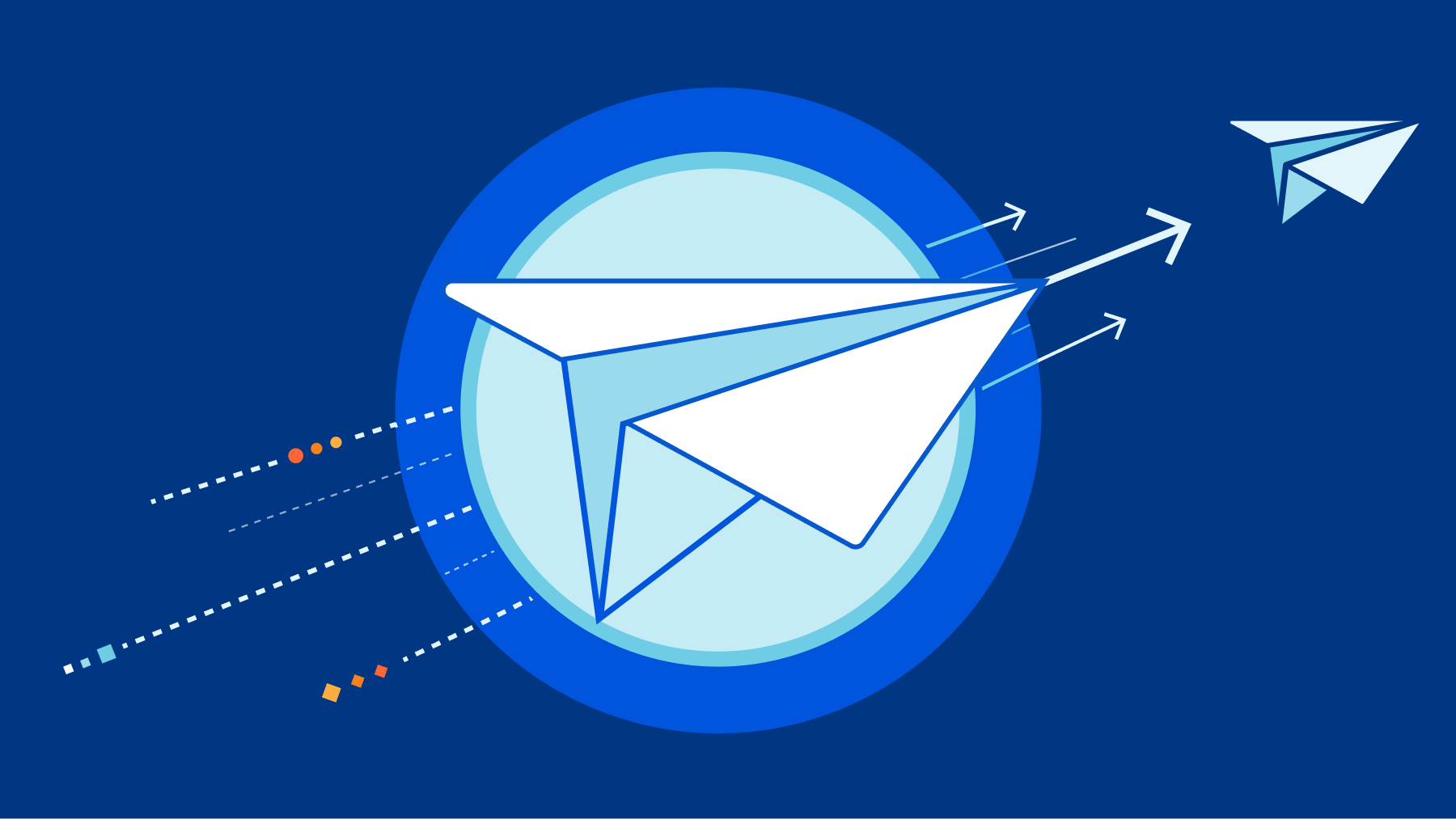
A few days ago Google announced that the users from the "G Suite legacy free edition" would need to switch to the paid edition before May 1, 2022, to maintain their services and accounts working. Because of this, many people are now considering alternatives.
One use case for G Suite legacy was handling email for custom domains.
In September, during Birthday Week, we announced Cloudflare Email Routing. This service allows you to create any number of custom email addresses you want on top of the domains you already have with Cloudflare and automatically forward the incoming traffic to any destination inboxes you wish.
Email Routing was designed to be privacy-first, secure, powerful, and very simple to use. Also, importantly, it’s available to all our customers for free.
The closed beta allowed us to keep improving the service and make it even more robust, compliant with all the technical nuances of email, and scalable. Today we're pleased to report that we have over two hundred thousand zones testing Email Routing in production, and we started the countdown to open beta and global availability.
With Email Routing, you can effectively start receiving Emails in any of your domains for any number of Continue reading
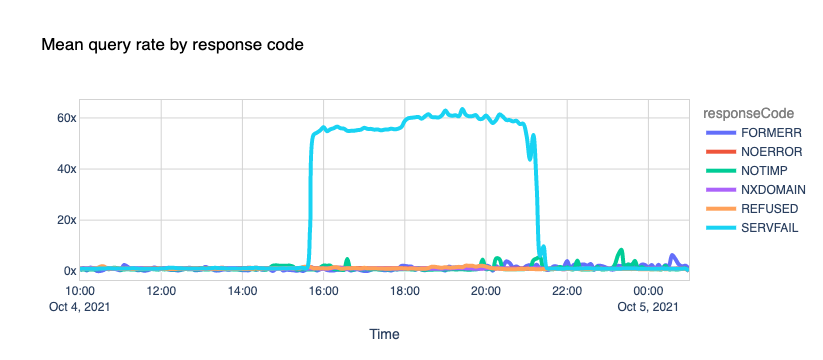
It's been a few days now since Facebook, Instagram, and WhatsApp went AWOL and experienced one of the most extended and rough downtime periods in their existence.
When that happened, we reported our bird's-eye view of the event and posted the blog Understanding How Facebook Disappeared from the Internet where we tried to explain what we saw and how DNS and BGP, two of the technologies at the center of the outage, played a role in the event.
In the meantime, more information has surfaced, and Facebook has published a blog post giving more details of what happened internally.
As we said before, these events are a gentle reminder that the Internet is a vast network of networks, and we, as industry players and end-users, are part of it and should work together.
In the aftermath of an event of this size, we don't waste much time debating how peers handled the situation. We do, however, ask ourselves the more important questions: "How did this affect us?" and "What if this had happened to us?" Asking and answering these questions whenever something like this happens is a great and healthy exercise that helps us improve our own resilience.
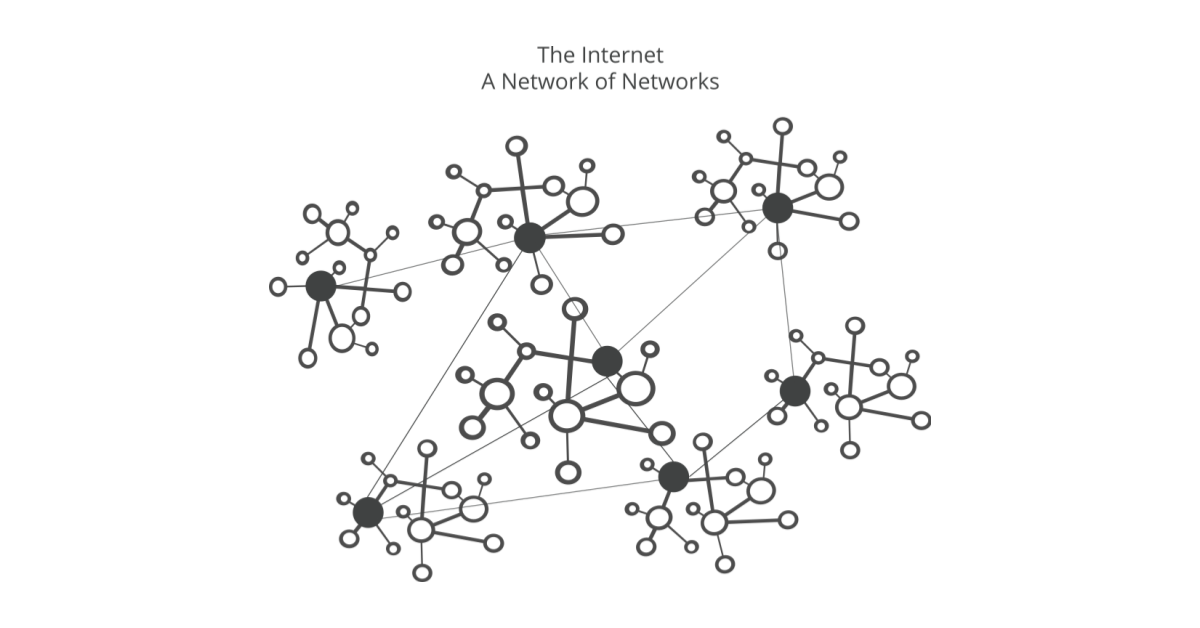

“Facebook can't be down, can it?”, we thought, for a second.
Today at 15:51 UTC, we opened an internal incident entitled "Facebook DNS lookup returning SERVFAIL" because we were worried that something was wrong with our DNS resolver 1.1.1.1. But as we were about to post on our public status page we realized something else more serious was going on.
Social media quickly burst into flames, reporting what our engineers rapidly confirmed too. Facebook and its affiliated services WhatsApp and Instagram were, in fact, all down. Their DNS names stopped resolving, and their infrastructure IPs were unreachable. It was as if someone had "pulled the cables" from their data centers all at once and disconnected them from the Internet.
This wasn't a DNS issue itself, but failing DNS was the first symptom we'd seen of a larger Facebook outage.
How's that even possible?
Facebook has now published a blog post giving some details of what happened internally. Externally, we saw the BGP and DNS problems outlined in this post but the problem actually began with a configuration change that affected the entire internal backbone. That cascaded into Facebook and other properties disappearing and Continue reading


There are halls and corridors in Cloudflare engineering, dangerous places for innocent wanderers, filled with wild project ideas, experiments that we should do, and extremely convincing proponents. A couple of months ago, John Graham-Cumming, our CTO, bumped into me in one of those places and asked: "What if we ported Doom multiplayer to work with our edge network?". He fatally nerd-sniped me.
Aside by John: I nerd-sniped him because I wanted to show how Cloudflare Workers and Durable Objects are a new architectural paradigm where, rather than choosing between two places to write code (the client, the browser or app, and the server, perhaps in a cloud provider availability zone), there’s a third way: put code on the edge.

Writing code that runs on a client (such as JavaScript that runs in a browser or a native app on a phone) has advantages. Because the code runs close to the end-user it can be highly interactive, there’s almost no latency since it’s literally running on the device. But client-side code has security problems: it’s literally in the hands of the end-user and thus can be reverse engineered or modified. And client-side code can be slow to update as it Continue reading
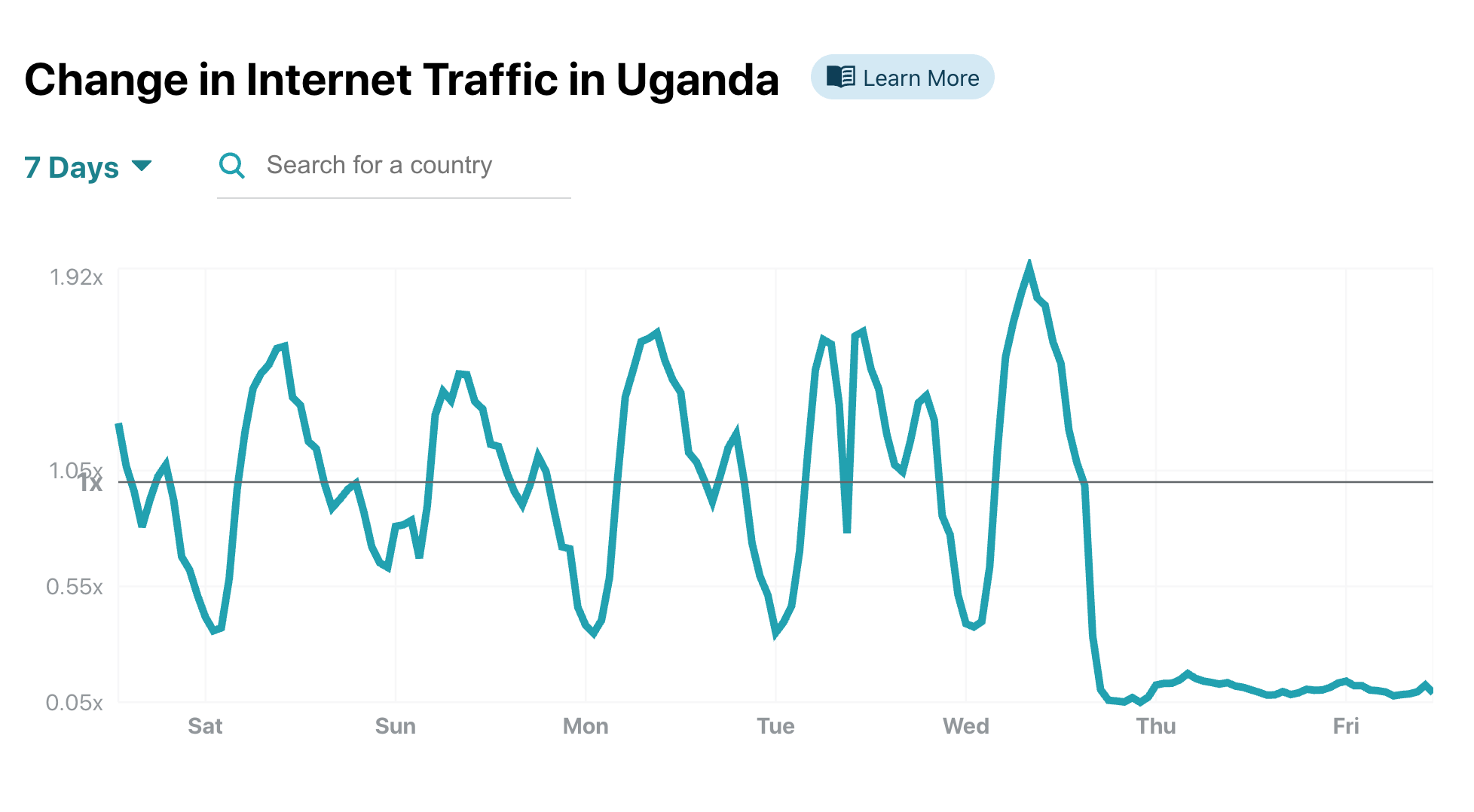
Two days ago, through its communications regulator, Uganda's government ordered the "Suspension Of The Operation Of Internet Gateways" the day before the country's general election. This action was confirmed by several users and journalists who got access to the letter sent to Internet providers. In other words, the government effectively cut off Internet access from the population to the rest of the world.
Ahead of tomorrow’s election the Internet has been shutdown in Uganda (confirmed by a few friends in Kampala).
— Samira Sawlani (@samirasawlani) January 13, 2021
Letter from communications commission below: pic.twitter.com/tRpTIXTPcW
On Cloudflare Radar, we want to help anyone understand what happens on the Internet. We are continually monitoring our network and exposing insights, threats, and trends based on the aggregated data that we see.
Uganda's unusual traffic patterns quickly popped up in our charts. Our 7-day change in Internet Traffic chart in Uganda shows a clear drop to near zero starting around 1900 local time, when the providers received the letter.

This is also obvious in the Application-level Attacks chart.

The traffic drop was also confirmed by the Uganda Internet eXchange point, a place where many providers exchange their data traffic, on their Continue reading

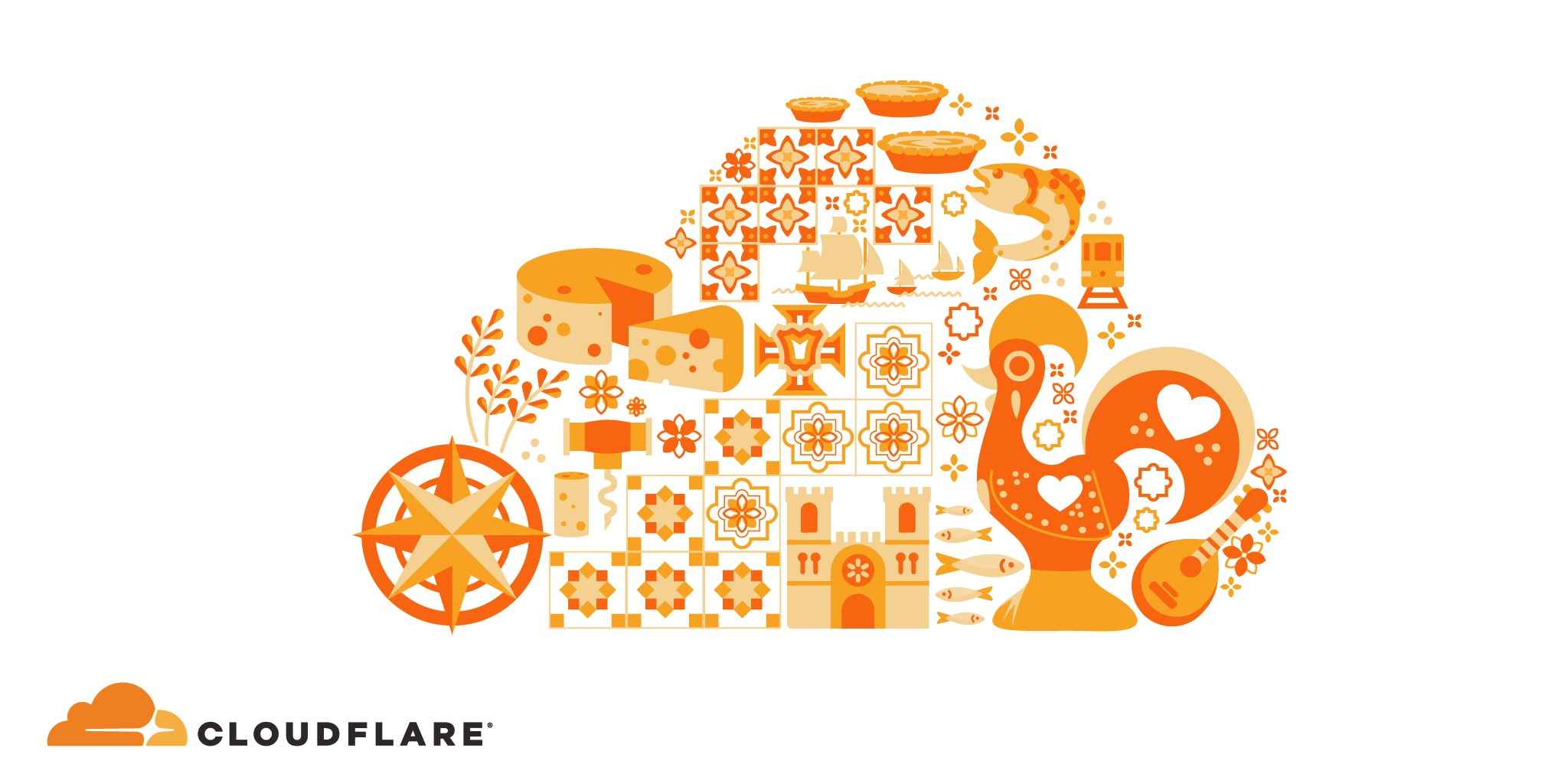
It's the end of the year, so we thought it would be a great time to give you an update on how we're doing and what we're planning for 2021. If you're reading this, you know we like to share everything we do at Cloudflare, including how the organization is evolving.
In July, John Graham-Cumming wrote a blog post entitled Cloudflare's first year in Lisbon. and showed how we went from an announcement, just a few months before, to an entirely bootstrapped and fully functional office. At the time, despite a ramping pandemic, the team was already hard at work doing a fantastic job scaling up and solidifying our presence here.
A few weeks later, in August, I proudly joined the team.
Cloudflare is, by any standard, a big company. There's a lot you need to learn, many people you need to get to know first, and a lot of setup steps you need to get through before you're in a position to do actual real productive work.
Joining the company during COVID was challenging. I felt just as excited as I was scared. We were (and still are) fully working from home, I didn't have a Continue reading